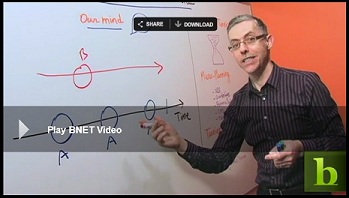By Melissa Sweat, Online Community Manager
Less-Is-More Blog by Pierre Khawand
Guest Blog for ProjectManagement.com: Four Productivity Tips for Managing Projects and Teams at the Micro Level
Posted by Pierre Khawand on Wed, Sep 11, 2013 @ 11:32 AM
Topics: effective meetings, business results, time management tips, productivity, management, team work, leadership
How to Create a Mind Map with MindJet Information Mapping Software (Video Tutorial)
Posted by Pierre Khawand on Fri, Jul 05, 2013 @ 04:07 PM
Here's a great video tutorial, below, on mind mapping with MindJet software. For more tips and tools about visual project mananagent, join us for our next free Lunch & Learn Webinar on 7/11/13 at noon PT: How to Use Visual Project Management for Greater Productivity.
Topics: virtual teams, Technology, business results, productivity, Lunch & Learn Webinars, management, collaboration
Three Surprises About Change: Chapter 1 Summary of 'Switch' by Chip and Dan Heath, Authors of 'Made to Stick'
Posted by Pierre Khawand on Mon, Mar 18, 2013 @ 03:02 PM

By Melissa Sweat, Online Community Manager
Change. Why is it so hard? How can we make effective, lasting changes in our organizations, lives, and communities when change itself seems so overwhelming and monumental? How do you even start? In the New York Times bestselling book, Switch: How to Change Things When Change is Hard, authors Chip Heath and Dan Heath provide refreshingly new perspectives on change in a vivid and practical narrative, while deconstructing the various barriers and how to surmount them.
I’ve summarized the first chapter to help illuminate the authors’ change-inspiring findings and jumpstart your “switch”:
The first surprise about change? “What looks like a people problem is often a situation problem.” As an example, the authors cite a study where people at a movie theater ate more popcorn out of bigger containers than smaller ones. People vs. Situation. If you want to get people to make a healthier choice with their popcorn eating, then the answer is simple: provide smaller containers. Identifying where changes can be made situationally can create profound and effective results.
In order to adopt change, we also need to understand, guide, influence, and attend to our hearts and minds. This can be difficult when head and heart so often disagree. To further explain this dichotomy, the authors refer to a book called The Happiness Hypothesis in which our emotional side is described as an Elephant and our rational side as the Rider. The Rider is the leader and has some ability to control and guide, but the Elephant is far stronger and, if provoked, tired, worn out, or scared, is always going to overpower the Rider.
Both Elephant and Rider have their strengths and weaknesses. The Elephant seeks short-term payoff, while the Rider can see goals for the long-term. The Elephant, meanwhile, has the power of emotions: love, compassion, loyalty, sympathy, ferocity—aspects that are going to commit and motivate ourselves toward lasting change. These are furthermore the things that connect us with other people and can make a compelling case for ourselves, company, brand, point-of-view etc. To drive change, you need the work, energy, and heart of the Elephant.
While the Rider is a decision-maker and a good guide, she can also overanalyze, which can be a paralyzing hindrance to change, as well. So you have to appeal to both and have Rider and Elephant move together. As the authors say, “A reluctant Elephant and a wheel-spinning Rider can both ensure that nothing changes.”
The second surprise about change: “Change is hard because people wear themselves out.”
Again, you can avoid wearing yourself, team members, or employees out by appealing to Rider and Elephant. You do this by providing crystal clear direction to both—which is the third surprise about change.
Here, in short, is the authors’ three-part framework for accomplishing change:
1. Direct the Rider.
2. Motivate the Elephant.
3. Shape and Direct (Clearly) the Path/Situation/Environment/Strategy.
What are some of the challenges you've experienced when trying to make change? What are some effective strategies you've discovered? Share your thoughts below.
For more helpful articles and tips, join our Accomplishing More With Less groups on LinkedIn and Facebook. Follow People-OnTheGo Founder Pierre Khawand on Twitter.
Additional Resources
Topics: business results, management, leadership
12 Key Values to Powerful Employee Engagement and Organizational Culture
Posted by Pierre Khawand on Mon, Feb 18, 2013 @ 03:46 PM
 By Eugene Dilan, Psy.D.
By Eugene Dilan, Psy.D.
The verdict around employee engagement is in, and there is widespread agreement that an engaged workforce leads to higher retention, higher productivity, better customer satisfaction and yes, better overall sales and profitability. Consequently, there are many ideas about how to best create, optimize, and leverage engagement. These hypotheses range from the simplicity of Paul Marciano’s “RESPECT model” to Sirota’s “3-Factor Theory,” the work of Cathleen Benko in “The Corporate Lattice,” which focuses on the customization of how we build careers, do the actual work, and communicate—and let’s not forget Gallup’s “12 Elements of Great Managing,” among many others. So the critical question is, when it comes to developing powerful employee engagement, which model is the real McCoy?
Unfortunately, there is no be-all and end-all model for optimizing engagement, and part of the reason for this is that individual employees, managers, executives, and organizations are not all alike. The strategies or levers that work with one person or place may simply not work with others. That said, if you look at a cross section of the research and working models, you might notice that some factors appear across all models—though the words used to describe them are all quite different.
I’ve made sense of the top engagement strategies across various models, and have provided them in the list below. The bottom line, however, is that true employee engagement interventions cannot be bought off the shelf and instead require time to assess and understand the specific and unique requirements for success within a specific sector, business, or individual. We need to move away from thinking of engagement strategies as simplistic tools that once implemented can be forgotten, and instead work to intervene in a more holistic fashion. Here are the 12 key values that will get your organization on the right track to creating a powerful, engaged culture:
- Engaged leaders and managers. You cannot have engaged employees if your leaders are not engaged.
- Trust in leadership. Do what you say you are going to do. Make critical decisions based on what’s best for all stakeholders (internal and external).
- Timely, honest, and consistent two-way communications.
- Personable relationships with immediate supervisors. Research shows that knowing your immediate supervisor on a more personal level improves engagement.
- Respectful and collegial relationships with colleagues who are committed to doing great work.
- Fairness (compensation, workload, during conflicts, etc.)
- Pride in an organization’s mission, products, or accomplishments.
- Opportunities for professional/career development (within and across functions) that are appropriately developmentally challenging.
- Reward/recognition for progress or a job well done—however small. If you do not water the plants they won’t grow.
- Ability to influence or have some level of self-determination.
- Flexibility (when, where, and/or how the work gets done).
- Some level of accommodation to address personal needs as they arise.
To say it more directly, employee engagement is about culture. Culture is about values, leadership capabilities, policies, practices, and behaviors. How does one create a strategic culture? That is a very complicated question that is far beyond the scope of this blog post. However, we can begin by working to assess and understand whether the values and behaviors of our current culture are in fact delivering the performance levels we seek. If not, engaging other stakeholders to explore how the factors listed above can be optimized in the context of your strategy and culture will help.
Remember, Rome was not built in a day and that you need to employ all of the tools in your war chest. Values, leadership capabilities, policies, procedures, communication tools, learning and development, and performance management (including incentives) are all but a few of the many levers that, together, can help you create a coherent and powerful intervention that will move your organization from being mediocre or good to being best in class.
Eugene Dilan, Psy.D., is the founder and president of Dilan Consulting, Inc., and has over 25 years of experience providing direct clinical care and organizational consulting from the war zones of Iraq and Afghanistan to healthcare facilities, the aerospace industry, IT, and many more. More information at www.dilanconsulting.com, or contact eugene@dilanconsulting.com.
Topics: guest bloggers, business results, team work, webinars, leadership
Why Your Organization Needs 'Visual Leaders' and How To Become One: An Interview with Author David Sibbet
Posted by Pierre Khawand on Mon, Jan 28, 2013 @ 06:27 PM
 David Sibbet is a world-reknowned visualization expert and author of the new book Visual Leaders: New Tools for Visioning, Management, and Organization Change. He will be presenting at our free webinar Thursday, January 31, 2013 at noon PT. (Seats are filling up fast! Click to register now.)
David Sibbet is a world-reknowned visualization expert and author of the new book Visual Leaders: New Tools for Visioning, Management, and Organization Change. He will be presenting at our free webinar Thursday, January 31, 2013 at noon PT. (Seats are filling up fast! Click to register now.)
We're also giving away several copies of David's new book! Simply participate in our short Leadership Survey for a chance to win.
The world is becoming an increasingly visual place—and your organization, business, or team needs a leader with the right visual IQ and know-how to communicate the "big picture." You don't have to be an artist, but becoming adept at utilizing visual practice techniques will be a huge boon to getting your team on board, sharing ideas, propelling projects forward, and so much more.
Read on for our interview with David Sibbet, who shares his expertise about the practice of visualization, why it's important to be a visual leader today, and how you can become one.
People-OnTheGo: For those who aren't familiar with visualization or visual practice, can you please describe the basic ideas of the field and its uses in a business or professional environment? What are some common applications?
 David Sibbet: Visual practice is using the tools of design thinking and graphic design interactively—much like one uses spoken words. Where once these ways of working were focused on design itself, the methods are now used by leaders and facilitators to support meetings, teams, and organization change processes. Visual practice includes graphic recording of meetings, visual facilitation of meetings and teams, and use of many kinds of media on the part of leaders to collaboratively develop visions, processes, and plans.
David Sibbet: Visual practice is using the tools of design thinking and graphic design interactively—much like one uses spoken words. Where once these ways of working were focused on design itself, the methods are now used by leaders and facilitators to support meetings, teams, and organization change processes. Visual practice includes graphic recording of meetings, visual facilitation of meetings and teams, and use of many kinds of media on the part of leaders to collaboratively develop visions, processes, and plans.
Why do think it's important in this day and age for leaders and managers to be "visual leaders"?
Almost all media in today's world integrates text and graphics, and in increasing numbers of cases, video. Not only are younger people quite fluid with these new ways of communicating, but anyone who is trying to develop and align people on new plans needs visuals to make sense out of the complexity. People understand how different parts of an organization connect and work together with mental models, diagrams, maps, and other kinds of displays. A leader who is visually adept has a tremendous advantage in his or her personal communications. If a leader understands how to work with and guide visual professionals it is an even greater advantage.
How can visualization techniques improve meetings, project management, and overall team function?
Active visualization improves meetings in four proven ways. 1. Visual spark imagination. 2. Active recording and co-creation greatly increases engagement. 3. Visual are the key to big picture thinking and systems thinking in groups. 4. Visuals create a group memory that supports implementation and action. This latter aspect is critical to project management, which is largely about getting actions to align and integrate over time. While project management software is highly visual, it is designed for individuals. Graphic templates, decision rooms, roadmaps and other large format visuals are what work with groups. Teams that understand how to run visual meetings and work visually in virtual settings have a much greater chance of getting results than those that don't—especially if they helped co-create the key documents they steer by.
What are three ways that leaders, managers, and others can increase their visual IQ? For non-artists/drawers, what are some tips and tricks to overcoming a fear or hesitancy of using these visual strategies?
Visualization is effective with very simple shapes and figures that anyone can learn to draw. The first way a leader or manager can become more literate is to use visuals in his or her personal notetaking and diagramming to thinking through ideas. A second important way is to begin paying attention to organizing mental models and metaphors that are embedded in verbal communication, and allow people to see how things work together. Visual note taking helps with this, but working with a visual practitioner who graphically records what is happening in key meetings raises everyone's consciousness on a group basis about the metaphors being used. To the extent that much of strategic thinking is analogous thinking (i.e. comparing one thing with something else), visualizing these comparisons allows everyone to expand on, challenge, and ultimately understand how everyone thinks things should work. A third way is to encourage teams and groups to share their ideas with each other using graphic templates rather than slide decks. Slides help the individual develop ideas, but do not invite enough engagement and interaction in most cases to allow others to come to new insight. Large murals and sketches, sticky notes and timelines allow groups to develop ideas all together at a rate that everyone can absorb. Drawing and diagramming is a way of thinking in and of itself. Consciously picking different formats to work with is like going to a brain gym and working out all the different mental muscles available to human beings.
Please describe some of your favorite visualization techniques and technologies.
A. Telling a group story visually is a winner in any kind of situation where you need to onboard new people, reflect on the past for insights, reinforce and think about values and culture. B. I love using graphic templates in small groups to create rapid prototypes of different things—like the general environment, possible visions, new business models, potential action plans—and then comparing for common themes and insights. Groups are full of wisdom and ideas if allowed the means to express them. C. Another favorite is taking strategy, visions, new business models, and other outputs from key meetings and turning them into story map posters that any leader can use to share the conclusions more widely. Treated like software, these large murals can go through versions and people provide input and feedback. The process of vetting the images aligns everyone who is involved, and makes the visuals very meaningful when they are eventually used in less interactive media. The technologies that allow these things to happen easily consist of readily available big paper from plotter printers, all variety of sticky notes in many color, many choices of water color markers, digital cameras and simple photo processing software. The professional tools for print production, infographic design, and video are easier and easier to use. There really is no technical barrier these days to being highly visual, as young people are discovering in explosions of interest.
What do you see is the future of visualization? And why is it important to get on board with this practice now?
In general, rich media is on the rise in all channels of communication. In business, because visualization is essential to systems thinking and design, and both these qualities are in high demand, visualization is also in increasing demand. This is probably why "design thinking" is so trendy right now. The fact that new touch technologies are transforming our ways of relating to the computer is bringing hand-creation back into vogue, so visualization goes beyond thinking to co-creating. In the future it's possible we'll see keyboards as a very outdated way to interface with information. Since a premium in any organization is having people engaged, understanding what they are doing, and remembering plans as everyone works on different aspects of a project—and these benefits come regularly when groups work together in visual ways. I believe you will see visualization become as standard as writing and calculating.
Topics: business results, Lunch & Learn Webinars, management, collaboration, team work, webinars, leadership
Tap Into Your Creativity Now With These Top 5 Books
Posted by Pierre Khawand on Thu, Oct 25, 2012 @ 01:29 PM
Forget oil, it’s creativity that may be our most elusive untapped resource. And it’s the reason why major global players like Google and 3M have famously allowed for “creative free time” at work, in which employees can engage in projects they’re passionate about for a nice chunk of time each week, be it a personal hobby or the like. This carte blanche on workplace creativity has been credited in leading to significant innovation at these companies. Moreover, they’ve given us insights on how to foster a more creative work culture, and are contributing to a greater movement in discovering how the brain can access and harness its amazing powers of creativity and innovation. Daniel Guillory, CEO of Innovations International, is a recognized expert on creativity and innovation, having worked with Toyota Financial Services, Ronald McDonald House Foundation, Merck & Co., and many other corporations and non-profits. We asked him to share his top five book picks on creativity, the brain, and innovation for both in and outside the workplace, so you can better tap into that vast, subconscious well:
Daniel Guillory, CEO of Innovations International, is a recognized expert on creativity and innovation, having worked with Toyota Financial Services, Ronald McDonald House Foundation, Merck & Co., and many other corporations and non-profits. We asked him to share his top five book picks on creativity, the brain, and innovation for both in and outside the workplace, so you can better tap into that vast, subconscious well:
1. Innovators DNA: Mastering the Five Skills of Disruptive Innovators by Jeff Dyer, Hal Gregersen, and bestselling author Clayton M. Christensen
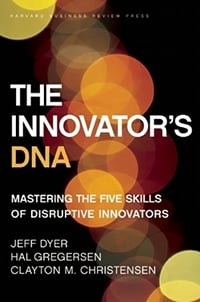
2. The Dream Workbook: Discover the Knowledge and Power Hidden in Your Dreams by Jill Morris

3. Creative Visualization: Use the Power of Your Imagination to Create What You Want in Your Life by Shakti Gawain

4. The Talent Code: Greatness Isn't Born. It's Grown. Here's How. by Daniel Coyle
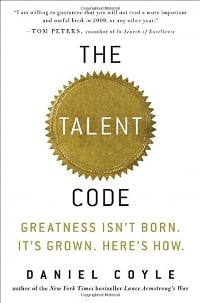
5. The Little Book of Talent: 52 Tips for Improving Your Skills by Daniel Coyle
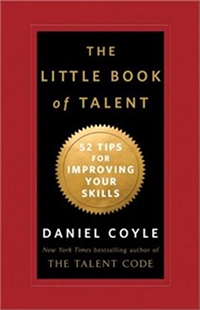
Daniel Guillory will be presenting at our free webinar, “Creativity and Innovation—How to Experience the Lightning Bolt Every Day,” on Thursday, Nov. 1, 2012 from 12:00-12:40 p.m. PT.
Topics: career, business results, Lunch & Learn Webinars, management, webinars
Staying focused in an ADD World: 3 techniques that can help!
Posted by Pierre Khawand on Mon, Jul 11, 2011 @ 10:31 PM
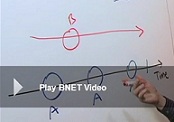 In my most recent interview at BNET, we got to work at the whiteboard again. I drew and explained how our mind works and how our own thoughts can be the biggest distraction of all, and then concluded with 3 specific techniques that can help us become better at staying focused, and also recovering quickly when our mind drifts into other unrelated territories or someone else interrupts our focus:
In my most recent interview at BNET, we got to work at the whiteboard again. I drew and explained how our mind works and how our own thoughts can be the biggest distraction of all, and then concluded with 3 specific techniques that can help us become better at staying focused, and also recovering quickly when our mind drifts into other unrelated territories or someone else interrupts our focus:
First Technique: Use a countdown timer
Not any timer – a countdown timer. Setting the countdown timer for 40 minutes (or whatever time period we choose) and then pushing the Start button has significant implications.
Just the fact that the timer is running seems to drastically heighten our awareness of time and allow us to quickly notice when we deviate from our task. It’s as simple as that. It is fascinating that such a simple and easy tool can have such an impact on our focus, but it does. Buying a countdown timer may very well result in the biggest return on investment that we can ever achieve!
Second Technique: Micro-Planning™ each 40 minute session
Creating a brief outline at the beginning of each 40 minute session listing key steps that we need to get done in order to complete the selected task can make the session as successful as it can be.
Ideally the Micro-Plan™ is handwritten in just a minute or two in the Notes section in the paper journal (described in the Accomplishing More With Less methodology).
Just like the timer, which appears to be a simple and perhaps expendable tool on the surface, Micro-Planning™ is a powerful technique that can help us stay focused, and if and when we have to deviate to take care of urgent issues, the Micro-Plan™ helps us restart our task with the minimum amount of effort and the fastest recovery time.
Third Technique: Turning Off External Interruptions
It sounds simple, and it would be if all external interruptions were within our control. Wishful thinking! Indeed, we can turn off the e-mail beep, forward the phone to voice mail, and indicate that we are busy or “away” in our Instant Messaging status, which we should do during our focus sessions. But it is much more difficult to switch off the people who stop by, the noise or conversations around our work area, and most importantly the urgent and critical requests that come from bosses, colleagues, customers, family and friends, not to mention the blame and guilt that come from not being available to handle all of the above promptly.
Staying focused in an ADD World--at the whiteboard
Additional Resources
- The complimentary Results Curve(tm) eBook download
- The Results Curve at Amazon.com
- 40-minute focus for breakthrough results--at the whiteboard
Topics: business results, time management tips, interruptions
THINK BIG, smart small, move fast! And how to so elegantly! (Part 2)
Posted by Pierre Khawand on Tue, Jun 14, 2011 @ 07:46 AM
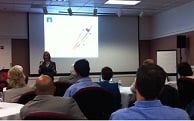 I mentioned to you a few weeks ago that I attended a presentation by Christine Heckart, CMO of NetApp, in which she shared some valuable insights, ranging from high level concepts to practical advice on how to lead, manage, and get results. I also talked about one of her insights which was "THINK BIG, start small, move fast!" I reflected on how THINK BIG applies to our daily productivity effort and provided related tips and techniques from our Accomplishing More With Less methodology. Now it is time to consider "start small."
I mentioned to you a few weeks ago that I attended a presentation by Christine Heckart, CMO of NetApp, in which she shared some valuable insights, ranging from high level concepts to practical advice on how to lead, manage, and get results. I also talked about one of her insights which was "THINK BIG, start small, move fast!" I reflected on how THINK BIG applies to our daily productivity effort and provided related tips and techniques from our Accomplishing More With Less methodology. Now it is time to consider "start small."
start small
Here are some "start small" tips and techniques that will help you undertake significant projects and initiatives with ease and elegance:
- 40 minutes at a time: When people ask me, how long did it take to write your book? I use this opportunity to tell them "40 minutes" which takes them by surprise at first, until I add "at a time." The 40 minute chunks and working in bursts are powerful technique that can help us move mountains one bucket at a time and feel rewarded after every bucket.
- Micro-Planning™: This is a journal technique that is simply but very powerful. It consists of breaking down the task that we are undertaking into small steps, and jotting these steps down. This is ideally done at the beginning of the 40 minute period, for the 40 minute period. We are talking "small!" But we are also talking "BIG" because this micro-plan helps us stay focused like never before, recover from unexpected interruptions like never before, and reach meaningful accomplishments like never before.
- Immediate Priorities Matrix™: This consists of listing our immediate priorities in a matrix, and breaking them down into steps, including estimates of how long each step will take, and the related deadlines. The matrix turns ambiguity and stress into action. It helps dissolve the illusions and bottleneck and puts us on the road to implementation, one step at a time.
Stay tuned for the "move fast" tips and insights. For now, THINK BIG and start small and share your thoughts with us in the comments section below!
Additional Resources
-
Live Interview with BNET--The Accomplishing More With Less Workbook
Topics: business results, productivity
The Cyber Threat, from script kiddies, to criminals, to terrorists! What to do about it!
Posted by Pierre Khawand on Fri, Jun 10, 2011 @ 04:03 PM
 Barry Cardoza's presentation at our lunch & learn webinar this week (The Cyber Threat--No Boundaries) provided some invaluable insights on a topic that we may otherwise take for granted in our busy lives until it suddenly interrupts our life and bring it to a standstill: The cyber threat.
Barry Cardoza's presentation at our lunch & learn webinar this week (The Cyber Threat--No Boundaries) provided some invaluable insights on a topic that we may otherwise take for granted in our busy lives until it suddenly interrupts our life and bring it to a standstill: The cyber threat.
What are our threats today?
Barry indicated that the threats can come from a variety of sources including:
- Script Kiddies
- Criminals
- Industrial Espionage
- Insiders
- Foreign Governments
Here are some attackers profiles
- Insiders: Insiders have a unique advantage due to access/trust. They can be motivated by revenge, organizational disputes, personal problems, boredom, curiosity, or to “prove a point.”
- Script Kiddies: Relatively untrained hackers that find exploit code/tools on the Internet and run them indiscriminately against targets. While largely unskilled, they are numerous.
- Criminals: Cyber based attacks offer new means to commit traditional crimes, such as fraud and extortion. Organized cyber-crime groups have adopted legitimate business practices, structure, and method of operation.
- Terrorists: Cyber-attacks have the potential to cripple infrastructures which are not properly secured. In addition, cyber-linkages between sectors raise the risk of cascading failures throughout the Nation.
So what can we do?
The first thing we can do is to become aware of the issues and help create such awareness at our companies and communities. The next thing we can do is to team up with the variety of organizations who are working diligently at prevention and preparedness and become part of this effort.
Download Barry's presentation to learn more. Barry offered to help you customize this presentation and connect you with agencies such as DHS, Secret Service, and the FBI, so you can present it at your organization. Contact Barry at BarryCardoza@BarryCardoza.com for more information.
About Barry Cardoza
 Barry Cardoza, Certified Business Continuity Professional (CBCP), and Principal of Barry Cardoza LLC, specializes in Business Continuity Program Development, Enhancement and Analytics. Barry has over 40 years of experience in business management, business process analysis, and continuous process improvement. This experience has been within many different industries and includes over 20 years within the banking industry. Previously responsible for Union Bank’s Business Continuity strategy, policy, compliance, and program implementation.
Barry Cardoza, Certified Business Continuity Professional (CBCP), and Principal of Barry Cardoza LLC, specializes in Business Continuity Program Development, Enhancement and Analytics. Barry has over 40 years of experience in business management, business process analysis, and continuous process improvement. This experience has been within many different industries and includes over 20 years within the banking industry. Previously responsible for Union Bank’s Business Continuity strategy, policy, compliance, and program implementation.
Topics: business results, Lunch & Learn Webinars, webinars
How to harness the power of working in "iterations" to overcome stress, procrastination, and perfectionism!
Posted by Pierre Khawand on Mon, Jun 06, 2011 @ 06:00 AM
 Wanting things to be right, especially right the first time around, can be stressful or even exhausting and not to mention counter-productive. This is a trap that we all fall into and those of us who may admit to be procrastinators and/or perfectionists are likely to fall into it more often.
Wanting things to be right, especially right the first time around, can be stressful or even exhausting and not to mention counter-productive. This is a trap that we all fall into and those of us who may admit to be procrastinators and/or perfectionists are likely to fall into it more often.
One strategy to fight this phenomenon back is to work in iterations. I described this strategy a while back and outlined 5 iterations that can get us going swiftly and help shatter procrastination and perfectionism. Most recently, I used this strategy and adapted it as follows.
- Iteration #1: This worked wonders. My project, which seemed daunting at first, transformed into a fun and exciting endeavor. This iteration gave me the permission to be creative and to approach the work from a problem solving perspective. Ideas started to flow without being restricted by filters and critical judgment. When there were gaps in my information or knowledge, I made a note of it, and kept going without that information. I was unstoppable during this time.
- I skipped iteration #2 because I didn't have much time and my project was short term.
- Iteration #3: Now this iteration started to flow easily. It is still in my opinion the more difficult iteration but a lot less daunting than if this work was approach all at once without iterations 1 & 2. Iteration #3 is when we take our original playful work and take it to the next level. This is where we fill in some of the gaps and address the issues in more depth. This is however also the most rewarding iteration because this is when results start to shape up and become more concrete.
- Iteration #4: In this case, this involved sharing my plan with others and discussing them via a virtual meeting. Involving others helped get some alignment on the goals and implementation plan, and avoided having me invest time in areas that weren’t consistent with the stakeholder’s vision and desired outcome.
- Iteration #5: This is still going on. Refinements are underway. This iteration is turning out to be more fun and relaxed than anticipated.
Rediscover fun and excitement in your work! let the power of iterations work for you and overcome stress, procrastination, and perfectionism! Try this out and report back in the comments section below!
Topics: business results, time management tips, productivity, managing stress








